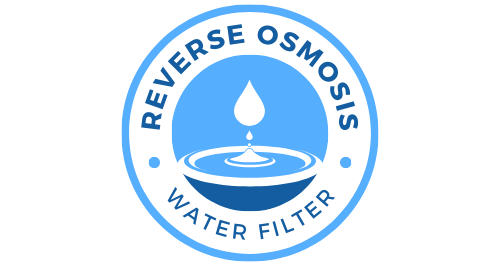“Will reverse osmosis remove bacteria?” is a common question among those considering water filtration options. Reverse osmosis is a filtration method that uses a semi-permeable membrane to remove impurities from water. This process operates on the principle of osmotic pressure, which naturally moves water from a lower concentration of solutes to a higher concentration. In reverse osmosis, external pressure is applied to reverse this natural flow, forcing water through a membrane from a higher concentration of solutes to a lower concentration. This effectively removes not only minerals and salts but also larger particles such as bacteria, making reverse osmosis an excellent choice for producing clean, safe drinking water.
The effectiveness of reverse osmosis in removing bacteria ensures that it is highly regarded in both residential and commercial settings. By addressing the key concern of “Will reverse osmosis remove bacteria?”, we can see why this technology is crucial for providing water that is not only free from chemical pollutants but also from harmful microbial pathogens. This method is widely applied in areas where clean, contaminant-free water is essential, underlining the importance of reverse osmosis in modern water treatment solutions.
Will Reverse Osmosis Remove Bacteria? Effectiveness of Reverse Osmosis in Removing Bacteria
Reverse osmosis (RO) is highly effective in removing bacteria due to its advanced filtration technology. The process utilizes a semi-permeable membrane that is fine enough to prevent bacteria and other microorganisms from passing through. By applying pressure to one side of the membrane, RO systems push clean water to one side while trapping bacteria, viruses, and other impurities on the other. This characteristic makes RO a preferred method for ensuring the microbiological safety of drinking water.
Will Reverse Osmosis Remove Bacteria? RO Removes Microorganisms
The RO membrane acts as a barrier to bacteria, with its tiny pores allowing only water molecules to pass through. This excludes bacteria based on size exclusion, as most bacteria are significantly larger than water molecules. Additionally, the pressure-driven process ensures that even those microorganisms that approach the membrane surface are pushed back, preventing them from contaminating the water supply.
Will Reverse Osmosis Remove Bacteria? Cost-Effectiveness and Maintenance
While reverse osmosis is an efficient method for removing bacteria and ensuring safe drinking water, it’s also important to evaluate the economic and practical aspects of owning and maintaining such a system. Reverse osmosis systems, while initially more costly than basic filters, prove cost-effective over time due to their durability and the extensive protection they offer against a wide range of contaminants, including bacteria.
The maintenance of RO systems is straightforward, which adds to their cost-effectiveness. Regular maintenance tasks include changing the pre-filters and post-filters annually, and the RO membrane every two to three years, depending on the water quality and usage rate. These tasks are crucial to maintain the system’s efficiency in removing bacteria. Failure to adhere to maintenance schedules can lead to decreased effectiveness, which may compromise the system’s ability to remove bacteria consistently.
Thus, when considering “Will reverse osmosis remove bacteria?” it’s clear that not only does RO do this effectively, but it also represents a financially sound investment in long-term water safety. The maintenance required is minimal compared to the peace of mind and health benefits provided by consistently clean, bacteria-free water. This makes reverse osmosis a preferred choice for those prioritizing both health and budget.
Will Reverse Osmosis Remove Bacteria? Conclusion
“Will reverse osmosis remove bacteria?” This critical question drives many to seek effective water purification solutions. The evidence is clear throughout our discussion: reverse osmosis systems excel in eliminating bacteria from drinking water, offering a superior level of purification compared to other methods. By integrating a semi-permeable membrane that acts as a barrier against bacteria and other contaminants, RO systems ensure that the water you drink is clean and safe.
For those looking to invest in a reverse osmosis system, understanding the effectiveness of these systems in removing bacteria is paramount. As you consider the best options available, we invite you to explore our review “Top 8 Best Reverse Osmosis Water Filters 2024“. This guide provides detailed product recommendations and insights to help you choose the right system for your needs.
FAQs
Can bacteria grow in a reverse osmosis system?
While the reverse osmosis process itself does not support bacterial growth, bacteria can potentially accumulate in parts of the system like the storage tank if not properly maintained. Regular cleaning and maintenance are essential to prevent this.
What maintenance is needed to ensure a reverse osmosis system continues to remove bacteria?
To keep a reverse osmosis system functioning effectively and continue removing bacteria, it’s important to replace pre-filters and post-filters at least annually and the RO membrane every two to three years, depending on usage and water quality. Regular system checks and cleaning are also recommended to ensure optimal performance.
How does reverse osmosis compare to boiling water for removing bacteria?
While both methods are effective for removing bacteria, reverse osmosis also removes a wider range of contaminants, including viruses, chemicals, and heavy metals, which boiling alone cannot remove. Additionally, reverse osmosis does not require energy for heating, making it more energy-efficient than boiling for continuous use.
What are the signs that a reverse osmosis system isn’t effectively removing bacteria?
Signs that your reverse osmosis system may not be working effectively include changes in the taste or smell of the water, a slower water flow rate, or visible sediment in the filtered water. Regular checks and maintenance can help ensure that the system is functioning properly.
